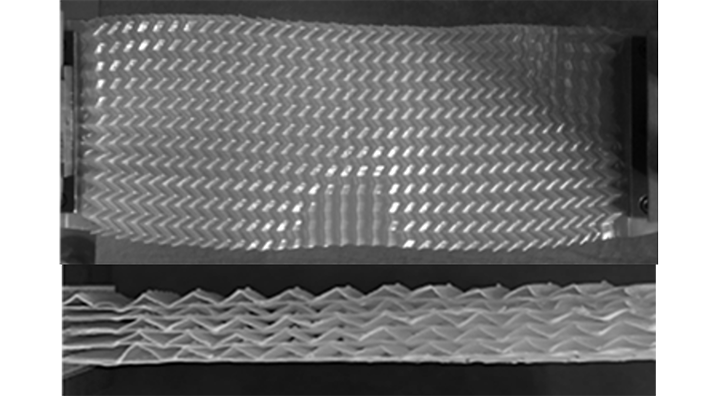Engineering news
The Fraunhofer Cluster of Excellence Programmable Materials (CPM) in Germany is developing the new materials, which could be used in mattresses or other applications.
Programmable materials change their characteristics in a controlled and reversible way with the push of a button, the researchers said, independently adapting to fit new conditions.
Used in mattresses, the materials could help people who are bedridden and unable to move or turn over by changing their form and mechanical properties to support the body in different ways. Instead of placing high pressure on one part of the body, support layers could distribute it more evenly across a wider area. Areas of the bed where pressure is placed could automatically become softer and more elastic, while caregivers could also adjust the ergonomic lying position to best fit patients.
Two key factors enable adjustments in the shape and stiffness of materials, said Dr Heiko Andrä from Fraunhofer CPM. “The base material – thermoplastic polymers in the case of mattresses, and metallic alloys for other applications, including shape memory alloys – and, more specifically, the microstructure. The microstructure of these metamaterials is made up of unit cells that consist of structural elements such as small beams and thin shells.”
The cells in the programmable materials in development at Fraunhofer CPM are variable, but can be precisely defined. This programming means that pressure on a particular position could result in specific changes at other regions of the mattress, such as increasing the size of the contact surface and providing optimal support to certain areas of the body.

Above: Stiffness and shape can be adjusted by patterning a film. Below: Stacking foils of different heights allows the creation of a programmable material
The change in shape and the stimuli to which the material reacts – mechanical stress, heat, moisture or even an electric or magnetic field – is determined by the choice of initial material and its microstructure.
“The programmable materials allow [you] to adapt products to the specific application or person so that they are more multifunctional than before. As such, they do not need to be swapped out as often,” said Franziska Wenz from Fraunhofer CPM. “It is particularly interesting in the context of material saving and sustainability.”
Eventually, a single piece of material could take the place of entire systems of sensors, regulators and actuators, the researchers said. Fraunhofer aims to reduce the complexity of systems by integrating more functionalities into the material and reducing material diversity.
Initial pilot projects with industry partners are also underway. The research team expects programmable materials to initially act as replacements for components in existing systems, or be used in special applications such as medical mattresses, comfortable chairs, variable damping shoe soles and protective clothing.
Ultimately, they said, the materials could be used “everywhere – from medicine and sporting goods to soft robotics and even space research”.
Want the best engineering stories delivered straight to your inbox? The Professional Engineering newsletter gives you vital updates on the most cutting-edge engineering and exciting new job opportunities. To sign up, click here.
Content published by Professional Engineering does not necessarily represent the views of the Institution of Mechanical Engineers.